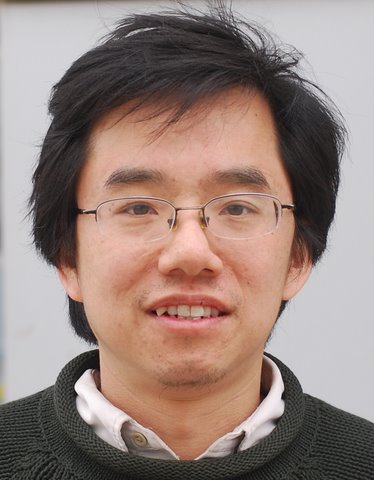Editorial Activities
2016-Present Editorial Board member of Journal of Computational Neuroscience
2009-Present Editorial Board member of Acta Biophysica Sinica
2014-Present Review Editorial Board member of Frontiers in Computational Neuroscience
Representative Peer-Reviewed Publications
1. Xiao, Z., Wang, B., Sornborger, A.T.*, and Tao, L.*, `Mutual information and information gating in synfire chains,` Entropy (2018)
2. Xiao, Z., Zhang, J.W., Sornborger, A.T.*, and Tao, L.*, `Cusps enable line attractors for neural computation,` Phys. Rev. E. (2017)
3. Zhao, M. et al, `Segmentation and classification of two-channel C. elegans nucleus-labeled fluorescence images,` BMC Bioinformatics (2017)
4. Shao, Y., Sornborger, A.T.*, and Tao, L.*, “A pulse-gated, predictive neural circuit,” 2016 50th Asilomar Conference on Signals, Systems and Computers (2017)
5. Wang, Z., Sornborger, A.T. *, and Tao, L.*, “Graded, dynamically routable information processing with synfire-gated synfire chains,” PLoS Comput.Biol. 12(6): e1004979 (2016)
6. Sornborger, A.T.*; Wang, Z.; Tao, L.* “A mechanism for graded, dynamically routable current propagation in pulse-gated synfire chains and implications for information coding,” J. Comput. Neurosci. 39, 181-195 (2015)
7. Wang, C. and Tao, L.* “Dimensional reduction of a V1 ring model with simple and complex cells,” J. Comput. Neurosci. 37, 481-492 (2014)
8. Zheng, C. Yu, Z., Zhou, Y., Tao, L., Pang, Y., Chen, T., Zhang X. Qiu, H., Zhou, H., Chen, Z. and Huang Y., “Live cell imaging analysis of the epigenetic regulation of the human endothelial cell migration at single cell resolution,” Lab on a Chip, 32, 3063-3072 (2012)
9. Tao, L.*, Praissman, J., and Sornborger, A.T.*, “Improved dimensionally-reduced visual cortical network using stochastic noise modeling,” J. Comput. Neurosci., 32, 367-376 (2012)
10. Cai, D., Tao, L., Shkarayev, M.S., Rangan, A.V., McLaughlin, D.W., and Kovacic, G., “The role of fluctuations in coarse-grained descriptions of neuronal networks,” Comm. Math. Sci. 10, 307-354 (2012)
11. Tao, L.*, Lauderdale, J.D.* and Sornborger, A.T.*, “Mapping functional connectivity between neuronal ensembles with larval zebrafish transgenic for a ratiometric calcium indicator,” Frontiers in Neural Circuits 5, 2 (2011)
12. Carceras, M.J., Carrillo, J.A., and Tao, L., “A numerical solver for a nonlinear Fokker-Planck equation representation of neuronal network dynamics,” J. Comput. Phys. 230, 1084 (2011)
13. Tao, L.* and Sornborger, A.T.* “Dimensionally-reduced visual cortical network model predicts network response and connects system- and cellular-level descriptions,” J. Comput. Neurosci. 28, 91-106 (2010)
14. Kovacic, G., Tao, L., Rangan, A.V., and Cai, D., “Fokker-Planck description of conductance-based integrate-and-fire neuronal networks,” Phys. Rev. E 80, 021904 (2009)
Teaching
Mathematical Modeling in the Life Sciences, Spring
Laboratory Introduction
Most of my research is in computational
neuroscience and mathematical modeling of biological systems. My main research
interests are in
1) Theoretical
and computational neuroscience
· Statistical physics approach to
neuronal network dynamics
· Dimensional reduction of
large-scale neuronal network dynamics
· Neural computations of pulse-gated
synfire chains
2) Mathematical
modeling and data analysis of V1
· Modeling of mammalian visual cortex
· Analysis of V1 neurophysiological
and calcium imaging data
3) Systems
level optical imaging and modeling
· Simultaneous behavior and neural
circuit imaging of C. elegans
· Analysis of large-scale zebrafish
calcium imaging data
The bulk of my work in
computational neuroscience has been aimed at understanding how biological
functions and large-scale spatio-temporal dynamical patterns in the mammalian
cortex emerge from the dynamic interaction between cortical neuronal network
components.
